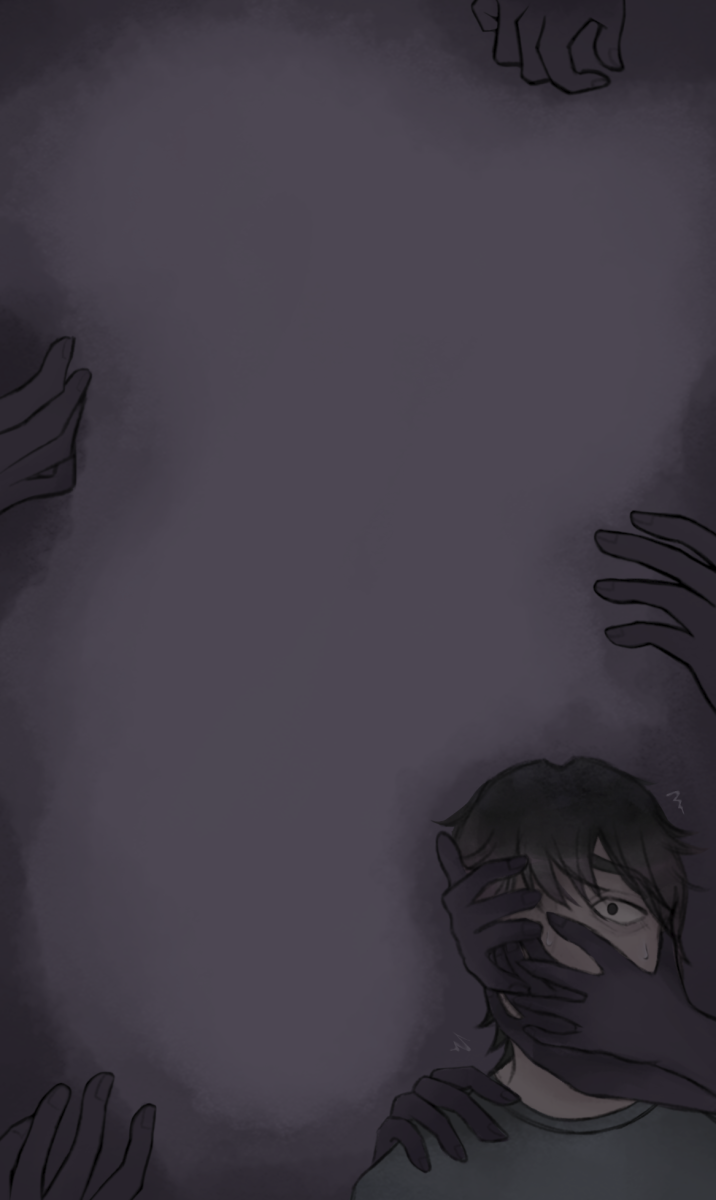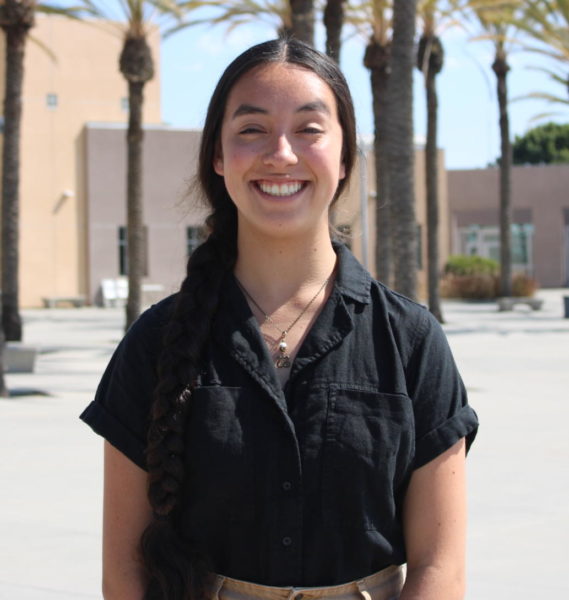
A block of clay stood before a 10-year-old Audrey Nguyen (12), but to her, with a touch of imagination and a dash of colorful paint, it held the potential to become a vase or a sculpture. She was at the San Diego Children’s Discovery Museum, a comforting place she visited frequently where art came alive and it felt like anything was possible.
“I felt safe and supported [at the Children’s Museum],” Nguyen said. “It was a community of like-minded individuals who are coming together not to achieve a specific purpose but just to create. There was no pressure to be perfect.”
Flash-forward to Nguyen’s sophomore year, and all that wonder became buried under the mounting pressure to achieve. Her schedule was filled with AP classes and sports practices, and her life was dominated by routine with little time for creativity.
“I stopped doing everything else for a while besides just homework, sports, sleep, eating, repeat,” Nguyen said. “I was really busy and really stressed.”
Dr. Janice Gapasin, Doctor of Psychology, is a lead psychologist at Shoal Creek Elementary in Poway Unified School District (PUSD). She said that she’s noticed a cultural pressure on students to grow up and take on responsibilities quickly.
“Parents, coaches, and society often put an unnecessary burden on students to ‘mature’ and ‘act their age,’” Gapasin said. “This contributes to burnout in sports, activities, etcetera.”
In the summer before senior year, Nguyen suddenly found that her free time had expanded considerably. With renewed enthusiasm, she began to take up the arts and crafts that had once been a source of joy in childhood.
“I began to do more painting, and I’ve expanded into crochet[ing],” Nguyen said. “I’ve gotten back into ceramics by using air dry clay to make little charms and jewelry dishes, and then I give them away as gifts.”
Gapasin said that engaging in childhood activities can allow for moments of reflection and coping with stress that are valuable for one’s mental health.
“Participating in childhood activities can take us back to a time when life was less complicated,” Gapasin said. “It also provides us a second chance to work through and struggle with roadblocks from our past [because you may think] ‘I’m in a better space to take this on.’”
Jade Lee (12) has also recently found time to engage more with her childhood. With her post-graduate plans set and less time occupied with extracurriculars, she finds herself coming home from school each day and playing the online game “Brawl Stars” with her 9-year-old sister.
“It’s funny because, although we have a really big age gap, I would say I probably spend the most time with her [out of my three sisters],” Lee said. “Because it’s senior year, I’ve had the time to spend with her and take her places.”
When she was 9 years old, Lee was fascinated by constellations and the galaxy. When she grew out of her elementary school books about astronomy, she handed them down to her sister, who also has developed an admiration for it.
Lately, the two have been able to bond over constellations. Lee said they connected further as her sister studied astronomy for her elementary school science field day.
“I had to go back and look at books and Google to remember some stuff, and it was cool going back and relearning so I could talk with my sister about it,” Lee said.
For Lee, her relationship with her sister has been able to serve as a connecting point between her own past and present. When it comes to looking back and being able to relive and remember our childhood, Gapasin said that these memories help drive how we navigate our present lives.
“Childhood memories and emotions can guide decision-making and dictate how we navigate relationships well into adulthood,” Gapasin said. “Significant moments do not have to be grand to be impactful and are often expressed in our value systems, resiliency factors, and can serve as an emotional compass. Relationships [with younger siblings] nurture and promote social connections, which in turn create a safe and supportive environment.”
Spending more time with her youngest sister, Lee has realized just how similar the two are to each other.
“She’s very energetic and it’s fun to see because when I was younger, I definitely acted like that,” Lee said. “I was a total dork, and when she acts like that, I’m like ‘Hey, I did the same thing.’”
Gapasin said that children’s comparatively simple perspectives are often beneficial to their well-being.
“The older we become, the more we tend to overcomplicate our lives,” she said. “Children have such a fresh and untainted perspective and viewpoint. There is a value in that innocence, as it contributes to a healthy development.”
Westview Ambassadors has allowed Jack Hubschmitt (12) to relearn this viewpoint through becoming a role model to local youths. For the past year, his travels to elementary schools have included instructive skits, playground playdates, and volunteering. While ambassadors are meant to mentor elementary school students, Hubschmitt has found that the social-emotional learning goes both ways.
“Children don’t keep score and once something’s done, it’s done,” he said. “It’s over. Why worry about it? They solve conflicts quickly and easily, with very little drama. If something’s wrong, you say it’s wrong, and you don’t stress about it. Nowadays, you’re worried about hurting someone by being friends with someone else. Everyone’s done something wrong by someone, and it’s very weird. It’s so hard to navigate.”
Hubschmitt has grown to appreciate the happy-go-lucky philosophy that he had for much of his life, a philosophy he has observed that children tend to prioritize. Working as an Ambassador, particularly in playground playdates, brought a carefree joy back to the forefront.
“I forgot what it’s like to just play outside, which feels weird to say, but if [the kids] want to play basketball, they play basketball,” Hubschmitt said. “I missed recess so much, [and] I missed that time to just unwind and just play games. It’s hard for me to recall a time when I wasn’t stressed out, had a bunch of schoolwork, and academics weren’t my first priority. Full on, [kids’] first priority is enjoyment.”
Following their example, Hubschmitt has begun incorporating recreational time into his life. It’s not always easy, but he feels that the effort is well worth it for the strengthening bonds between him and his friends.
“Recently I’ve actually been having game nights with my friends, which is something I didn’t do up until this year,” he said. “It’s good to just play games with my friends because up until that point, [work has] been nonstop.”
Through making art, Nguyen has been able to reconnect to a simpler perspective as well. Nguyen’s sanctuary in art has become a creative space once more where she can relax, work on a creative project, and jam out to music she likes. She said that the meticulousness of the activities has helped her take her mind off of stressors like applying to college.
“Especially with crocheting or something that’s repetitive, like painting where you have to really focus on the little details, it makes it easy for me to destress,” Nguyen said. “I listen to Taylor Swift or other songs while doing it, and I feel calm and relaxed.”
Nguyen said that engaging in creative activities helps her intentionally enjoy the time she has left before adulthood. She said that the awareness that life will get busy again soon makes the moments in which she can just be creative feel extra special.
“I get to use my hands like I used to when I was a kid making art, and I think there’s something so cute about the innocence of it all,” Nguyen said. “Sometimes I have to take a break [from art] again, but in the end, I feel like I always come back to it because it makes me happy.”
Gapasin described how a relationship with one’s younger sibling can create a key connection to a person’s sense of youth.
“Being present in a younger sibling’s life, experiencing moments and wonder from a different perspective, but also sharing in that same joy and journey, that’s where the connection comes from,” Gapasin said.
Lee has found a new joy due to spending time in her younger sister’s presence. While being busy with extracurriculars throughout the past four years, she forgot a lesson that her sister has been teaching her: to appreciate the little things.
“It’s cool to see how energetic [she is] and how much she enjoys life because, especially the past couple of years, I’ve been working so hard to get into college that sometimes I forget the little things are really cool,” Lee said.
Hubschmitt said that he has also found enjoyment through interacting with students in their first years of school while he experiences his last. Having recently celebrated his 18th birthday, and with graduation rapidly approaching, he has had the opportunity to reflect on his year, and he has emerged from this reflection with a strong resolve to not shy away from his natural exuberance.
“I’m finding it easier to fall into heightened emotions and it’s easier to incorporate that in my life because [in Ambassadors skits] you amp it up so you don’t stress out as much,” Hubschmitt said.
Gapasin noted that the connection between the Ambassadors and the children they visit is only made possible by the Ambassadors’ willingness to emulate children’s carefree nature.
“There is an intrinsic value to Ambassadors, and [it’s] a blessing to be able to witness the positive impact they are having on younger students,” she said. “Sharing in that vulnerability is the main line to connecting to that sense of youth.”
For many seniors, the end of the school year is a bittersweet time navigating through many lasts. However, for Lee, she has been able to see herself through her little sister and appreciate how far she’s come.
“Being able to relive my memories has helped remind me how much I’ve grown in the past years,” Lee said. “I get to see how my sisters are going through similar things that I went through and it shows me how far I’ve come. It definitely makes me appreciate how hard I’ve worked, and it makes me excited to see what [my sisters] will accomplish.”









